A table tennis ball covered with a conducting paint is suspended by a silk thread so that it hangs between tow metal plates. One plate is earthed, when the other plate is connected to a high voltage generator, what will happen to the ball.
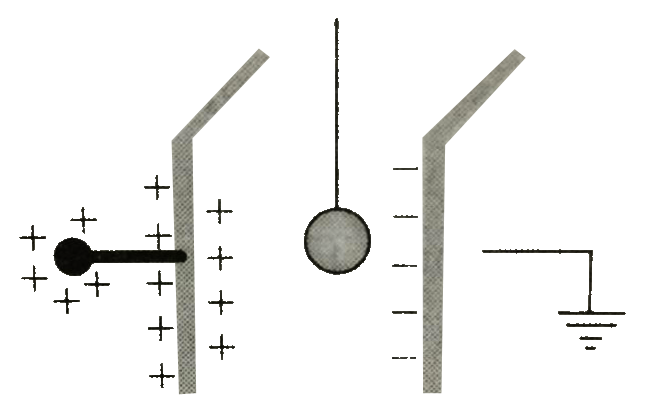
is attracted to the high voltage plate and stays there
hangs without moving
swings backward and forward hitting each plate in turn
is repelled to the earthed plate and stays there
The correct Answer is:C
When the other plate is connected to the high voltate generator, the negative charge induced on the ball cause attraction. When it strikes the +ve plate charge distribution again takes place. This causes repulsion. Hence, the ball swings backward and forward hitting each plate in turn.
Topper's Solved these Questions
- BOOK - NARAYNACHAPTER - ELECTRIC CHARGES AND FIELDSEXERCISE - EXERCISE -443videos
ELECTRIC CHARGES AND FIELDS
- BOOK - NARAYNACHAPTER - ELECTRIC CHARGES AND FIELDSEXERCISE - EXERCISE -2 (H.W)36videos
ELECTRIC CHARGES AND FIELDS
- BOOK - NARAYNACHAPTER - DUAL NATUREEXERCISE - LEVEL-II (H.W)17videos
DUAL NATURE
- BOOK - NARAYNACHAPTER - ELECTRO MAGNETIC INDUCTIONEXERCISE - Level-II (H.W)23videos
ELECTRO MAGNETIC INDUCTION
Similar Questions
When a parallel plate capacitor is charged by connecting it across a battery then battery is disconnected. If one plate of capacitor is earthed and isolated then another plate is connected to earth and then isolated. What will be the final charge on the capacitor after this operation. Will it be less than, equal to or more than the initial charge? Explain why?
View SolutionWhat happens when two moving plates of earth's crust collide head on with each other ?
View Solution
Knowledge Check
- Question 1 - Select One
Consider an evacuated cylindrical chamber of height h having rigid conducting plates at the ends and an insulating curved surface as shown in the figure. A number of spherical balls made of a light weight and soft material and coated with a conducting material are placed on the bottom plate. The balls have a radius r<<h. Now a high voltage source (HV) is connected across the conducting plates such that the bottom plate is at +V0 and the top plate at −V0. Due to their conducting surface, the balls will get charged, will become equipotential with the plate and are repelled by it. The balls will eventually collide with the top plate, where the coefficient of restitution can be taken to be zero due to the soft nature of the material of the balls. The electric field in the chamber can be considered to be that of a parallel plate capacitor. Assume that there are no collisions between the balls and the interaction between them is negligible. (Ignore gravity)

Which one of the following statements is correct?A(a) The balls will stick to the top plate and remain thereB(b) The balls will bounce back to the bottom plate carrying the same charge they went up withC(c) The balls will bounce back to the bottom plate carrying the opposite charge they went up withD(d) The balls will execute simple harmonic motion between the two plates - Question 2 - Select One
Consider an evacuated cylindrical chamber of height h having rigid conducting plates at the ends and an insulating curved surface as shown in the figure. A number of spherical balls made of a light weight and soft material and coated with a conducting material are placed on the bottom plate. The balls have a radius r<<h. Now a high voltage source (HV) is connected across the conducting plates such that the bottom plate is at +V0 and the top plate at −V0. Due to their conducting surface, the balls will get charged, will become equipotential with the plate and are repelled by it. The balls will eventually collide with the top plate, where the coefficient of restitution can be taken to be zero due to the soft nature of the material of the balls. The electric field in the chamber can be considered to be that of a parallel plate capacitor. Assume that there are no collisions between the balls and the interaction between them is negligible. (Ignore gravity)
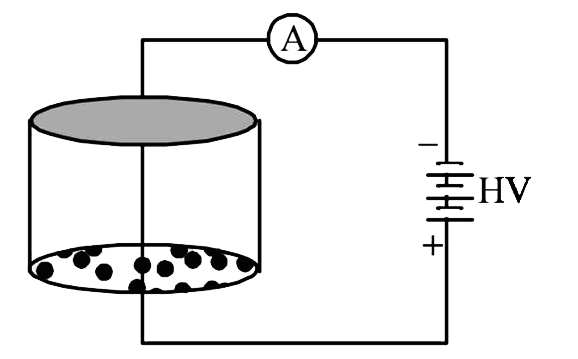 A(a) zeroB(b) propotional to the potential V0C(c) proportional to V1/20D(d) proportional to V20
A(a) zeroB(b) propotional to the potential V0C(c) proportional to V1/20D(d) proportional to V20 - Question 3 - Select One
When charge is at rest then it creates only electric field not the magnetic field. A moving charge generates electric as well as magnetic field around it. If charge is moving with constant velocity then electric and magnetic field do not change with time, hence, it cannot produce electromagnetic wave. When charge is accelerated then time-varying electric and magnetic fields are created and thus electromagnetic wave is produced by accelerated charge. We know that the current-carrying wire creates magnetic field around it. If alternating current is flowing through the wire then it creates variable magnetic field around it and thus starts radiating electromagnetic waves. When a charged capacitor is connected across an inductor then charge starts oscillating between the plates of the capacitor. Normally one plate of the capacitor is connected to Earth and the other plate is connected to an antenna. Antenna radiates electromagnetic wave. Hertz successfully produced electromagnetic waves using such LC oscillator. Speed of electromagnetic wave in vacuum is constant and equal to 3×108 m/s. But inside a medium the speed changes according to electrical and magnetic properties of the medium.
Which of the following cannot create electromagnetic wave ?AWire carrying alternating currentBOscillating chargeCWire connected to a DC power sourceDcharge moving in a circular path
As shown in, two large parallel vertical conducting plates separated by distance D are charge so that their potential are +V0 and −V0. A small conducting ball of mass m and radius r (whereR<<d) is hung midway between the plates. The thread of length L supporting the ball is a conducting wire connected to ground, so the potential of the ball is fixed at V=0. The ball hangs straight down in stable equilibrium when V0 is sufficiently small. Show that the equilibrium of the ball is unstable if V0 exceeds the critical value [ked2mg/(4RL)]1/2.
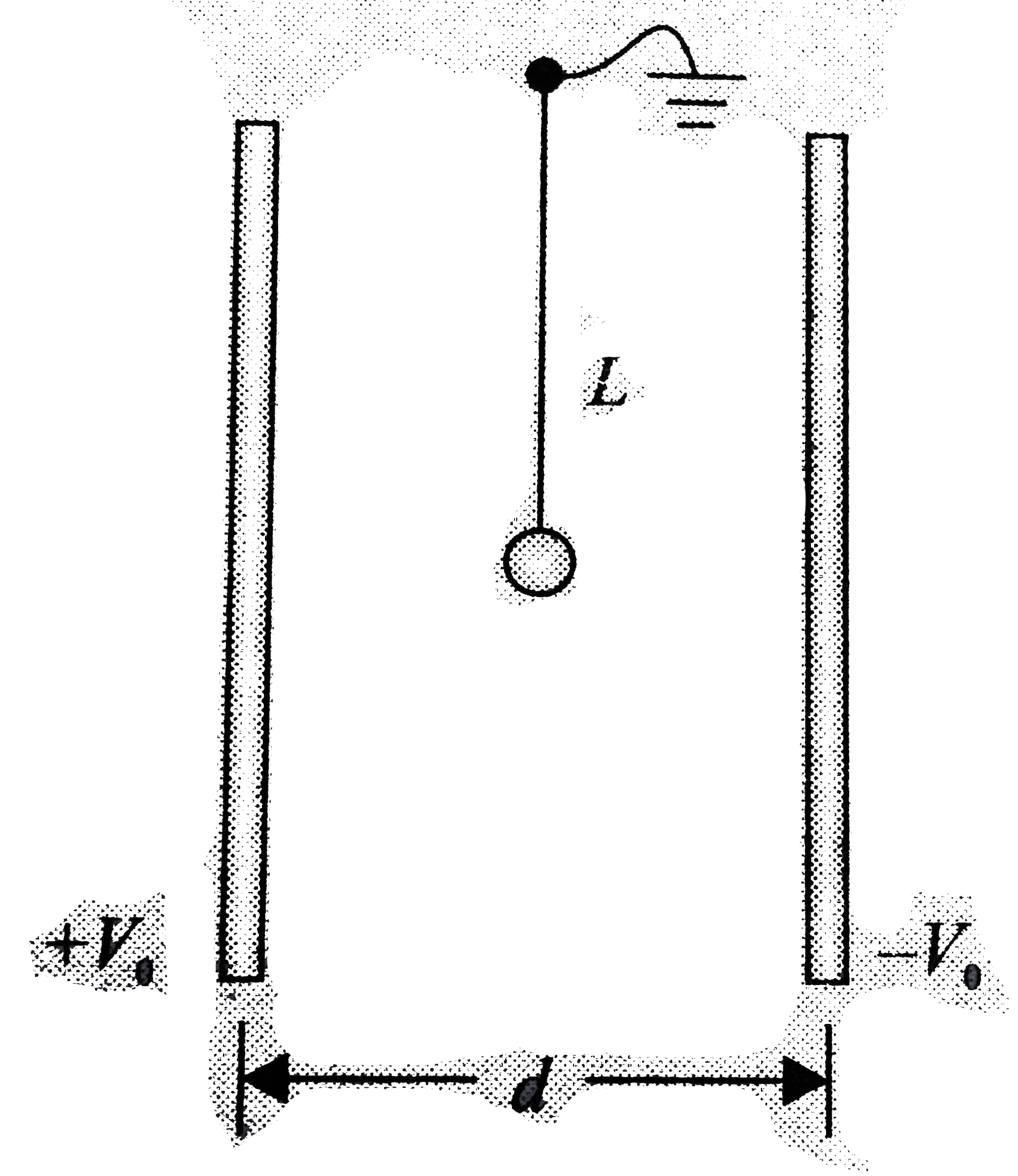 View Solution
View SolutionThree small equally charged identical conducting balls are suspended from identical insulating threads secured at one point. Length (L) of the threads is large compared to the equilibrium separation (a) between any two balls. (a) One of the balls is suddenly discharged. Find the separation between the charged balls when equilibrium is restored. Assume that the threads do not interfere and balls do not collide. (b) If two of the balls are suddenly discharged, how will the balls behave after this? Find the separation between the balls when equilibrium is restored. The threads do not interfere
View SolutionA parallel plate capacitor ils arrranged horizontally in a mechanical situation with the lower plate is fixed and the other connected with a perpendicular spring as shown in figure. The area of eachh plate is A and in equilibrium the distance between te plates is d0. WHen the capacitor is connected with a source of voltage V, a new equilibrium appears after some displacement in upper plate with the new distasnce between the plates d1. Given that mass of the upper plate is m
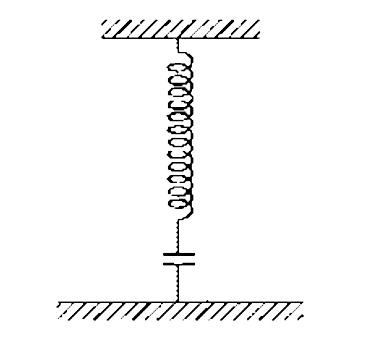 View Solution
View SolutionWhen charge is at rest then it creates only electric field not the magnetic field. A moving charge generates electric as well as magnetic field around it. If charge is moving with constant velocity then electric and magnetic field do not change with time, hence, it cannot produce electromagnetic wave. When charge is accelerated then time-varying electric and magnetic fields are created and thus electromagnetic wave is produced by accelerated charge. We know that the current-carrying wire creates magnetic field around it. If alternating current is flowing through the wire then it creates variable magnetic field around it and thus starts radiating electromagnetic waves. When a charged capacitor is connected across an inductor then charge starts oscillating between the plates of the capacitor. Normally one plate of the capacitor is connected to Earth and the other plate is connected to an antenna. Antenna radiates electromagnetic wave. Hertz successfully produced electromagnetic waves using such LC oscillator. Speed of electromagnetic wave in vacuum is constant and equal to 3×108 m/s. But inside a medium the speed changes according to electrical and magnetic properties of the medium.
IF μrandεr are the relative permeability and relative premittivity of the medium then speed of light in that medium can be written asView SolutionConsider an evacuated cylindrical chamber of hight h rigid conducting plates at the ends and an insulating curved surgace as shown in the figure. A number of spherical balls madeof a light weight and soft material and coagted with a conducting material are placed on the bottom plate. The balls have a radius r<<h. Now a high voltage source (HV) is connected across the conducting plates such that th ebottom plate is at+V0and the top plate at−V0. Due to their conducting surface the balls will get charged, will become equipotential with the plate and are repelled by it. The balls will eventually collide with the top plate, where the coefficient of reatitution can be taken to be zero due to the soft nature of the material of the balls. The electric field in the chamber can be considered to be considered to be that of a parallel plate capacitor. Assume tht there are no collisions between the balls and the interaction between them is negligible. (Ignore gravity)
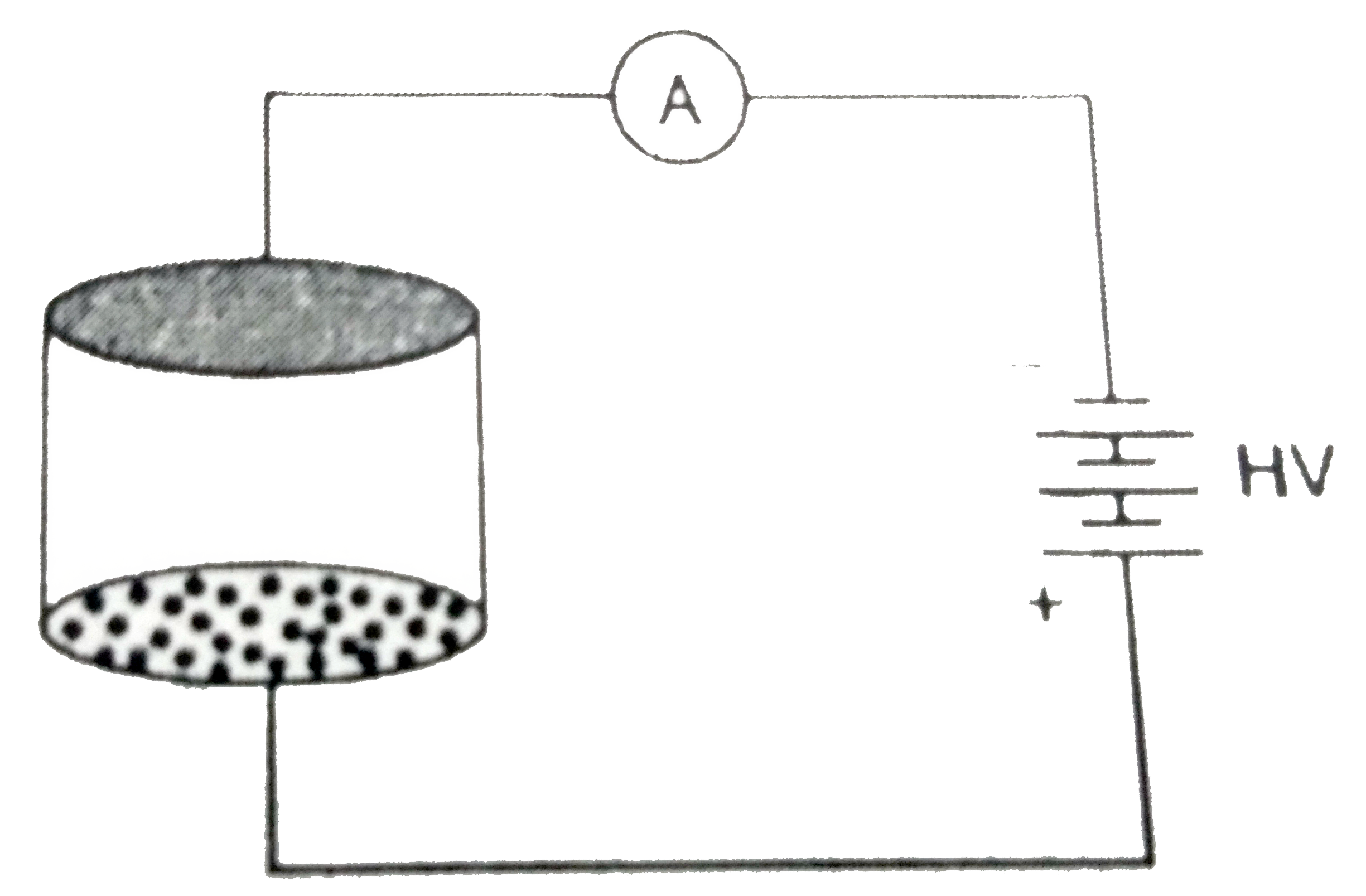
Which one of the following statements is correct ?View Solution

